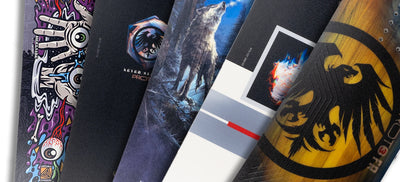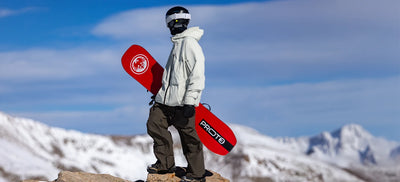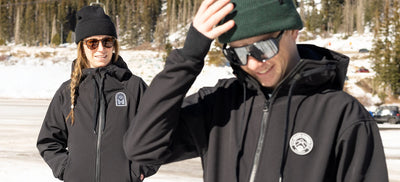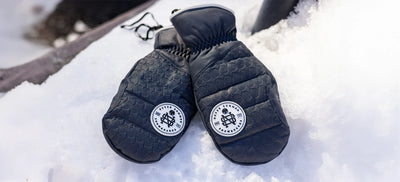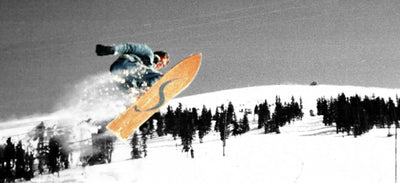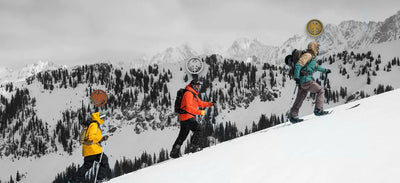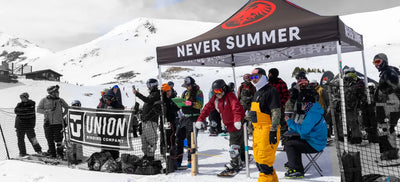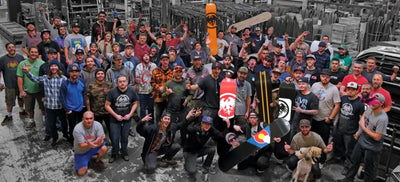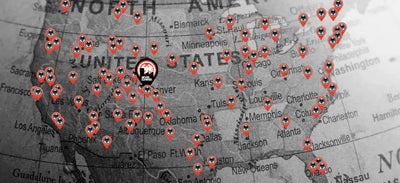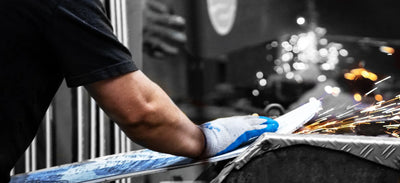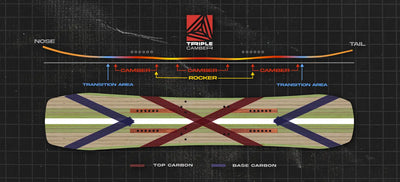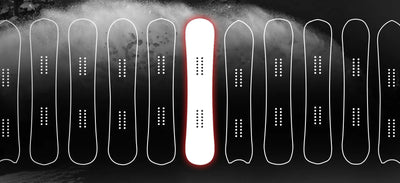
Board Features Impacting Performance
We’re going to go over some features and construction that add to your snowboarding experience. These add to the durability and performance of a Never Summer snowboard.
Board Materials
Your board is going to be made out of one of these five materials:
• Base: Either sintered (more durable, faster, stronger, and holds wax) or extruded. The entire Never Summer line is sintered.
• Carbon Fiber: Have flex and pop. Carbon boards are either longitudinal or torsional.
- Longitudinal: Stiffer boards are ideal for stability. Softer boards are for press-ability
- Torsional: Stiffer boards are great for stability at higher speeds with an amazing edge to edge response. Softer boards are ideal for maneuverability at slow speeds and have gas pedal feet
• Fiberglass: Adds to durability and there are 3 types to choose from:
- Bi-Axial: Lightweight and strong
- Tri-Axial: Added stiffness and strength
- STS: Pretensioned and prehardened and maintains life and the shape of the board
• Wood Core: Polar and aspen hybrid. Lightweight, strong, and has a core profile.
• Rubber: Snappy, smooth, and cushy. Rubber is used to absorb vibration, The more rubber in a board, the more damp—meaning it’s a smoother ride with less chatter and improved stability at higher speeds. A board with less rubber will be more snappy, giving it a crisper pop.
Sidecut Radius Options
The sidecut radius measures the radius of the side of the board and can change the angle of your turns. There are 3 types of sidecuts:
• Deep sidecut radius: Ideal for quick tight turns
• Shallow sidecut radius: Best for those long carves
• PowerGrip sidecut: Combines 5 radii along the edge to make entire edge effective when flexed, making it best for a deep to shallow to flat to shallow to deep ride
Effective Edge
The effective edge is the length of the edge in contact with the snow and changes how long you can ride for. There are 2 types of effective edges:
• Longer effective edges: Provide more grip on carves and ride longer
• Shorter effective edges: More playful feel and ride shorter
Taper
Before we discuss the tip and tail of your board, we need to talk about taper. Taper is the difference between the width of the tip and tail of your board and this changes how your board floats in powder. More taper makes the tip of your board float better in powder by driving the trail down. It also helps with turning with the narrower tail making it easier to “brush around” or roll from edge to edge. Basically your tip and tail are going to impact how your board interacts with the snow underneath it
Your tip and tail can also be low profile, blunted or early rise. A low profile tip and tail reduce the plowing effect and a blunted tip lessens wing weight when you’re turning and in the air. An early rise tip increases the upturn of the nose of the board to add to powder floatation and glide in wet, slushy snow conditions.
Don't Have time to Read It NoW?
Click the button next to this text to download your own PDF copy of Never Summer's How to Choose a Snowboard: The Ultimate Guide


